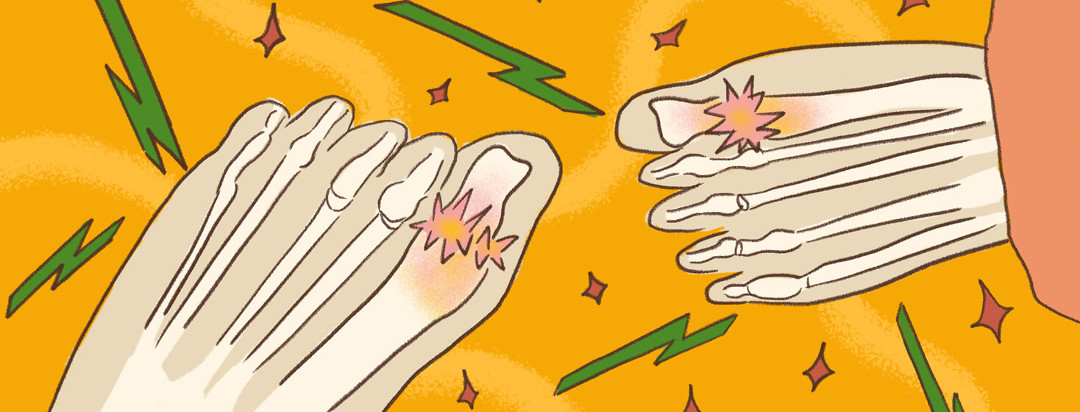Diabetes and the Risk of Gout
I know, I know, more stuff on what people with diabetes are at risk for. But this type of knowledge allows you to be informed, so you can make better choices and hopefully not have to deal with the condition.
Anyway, if you've ever had gout then you know just how painful it is and how much you want to avoid it, if possible. I've had it several times, before and after my diabetes diagnosis. Thankfully, it's been 2 years now without any flare-ups.
What is gout?
Gout is a condition that occurs when you have too much uric acid in your blood, which forms sharp crystals that accumulate in a joint or multiple joints (your big toe in many cases). This crystal accumulation in the joint is very painful and causes joint damage, so it's important to fix this ASAP to avoid longterm irreversible damage.
It's not only the joints that are affected, the kidneys are affected too, and kidney stones can form. Also, high uric acid levels over an extended period of time can cause the crystals to come the surface as, what appears to be, a lump on your elbow, knee, or ear.
What causes uric acid?
Uric acid is the result of purines broken down in the blood. Purines are a protein found in certain foods. A diet containing high amounts of purines puts you at a greater risk of gout.
Foods that contain purines
- Red meat
- Organ meat
- Fructose
- Seafood
The level of purines varies between food types, with some seafood and organ meat ranking as top contenders for having the highest level of purines. Fructose (sugar) is pretty high on the list as well. Red meats have moderately high level of purines.
The only meat I could find that's completely free of purines is chicken. It stinks, but moderation is key if you want to still be able to eat the foods you love.
The risk of gout with type 2 diabetes
People with type 2 diabetes are at a greater risk of getting gout and vice versa; those who have gout have a greater risk of getting type 2 diabetes. There are several reasons for this, including the risk factors below.
Risk factors for gout
- Being overweight
- Poor diet with high purine intake
- High blood pressure
- Family history of gout
- Dehydration
How can you tell if you have gout?
A doctor can draw blood and check the level of purines in your blood. If levels are over a certain amount, they will diagnosis you. Or, they will draw a sample from the inflamed joint. Men over the age of 30 make up the majority of gout cases, while women usually are not at risk until after menopause.
What you can do to minimize the risk of flare-ups?
- Stay hydrated
- Maintain a healthy weight
- Keep blood pressure down
- Exercise
- Use moderation in your diet
Treatment for gout
Doctors can prescribe drugs that lower your uric acid. I prefer home remedies myself, instead of medications. A friend of mine who suffers from gout told me to drink cherry juice or eat cherries. His doctor suggested it and it worked for him. So the next time I started having a flare-up, I got a bag of cherries and, sure enough, the next day all symptoms were gone. Cherries are high in vitamin C and also have anti-inflammatory properties.
Summary
If you ever have severe pain in your joint, to the point that even a bed sheet causes severe pain, please get it checked and follow the advice of your doctor. If you choose to eat cherries or drink cherry juice, please make sure you aren't allergic to it. I have to keep it away from my grandson because he is highly allergic to them.

Join the conversation